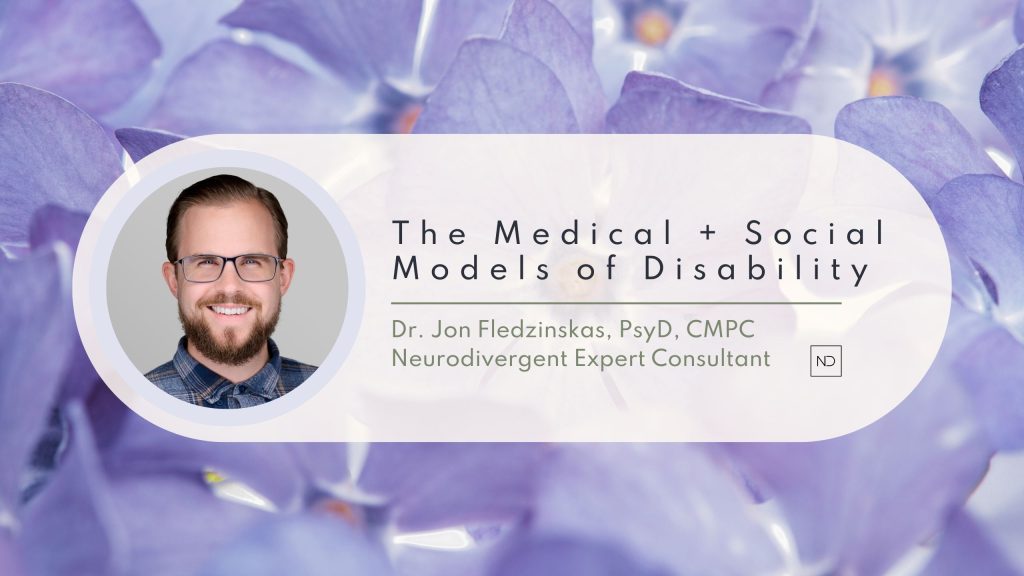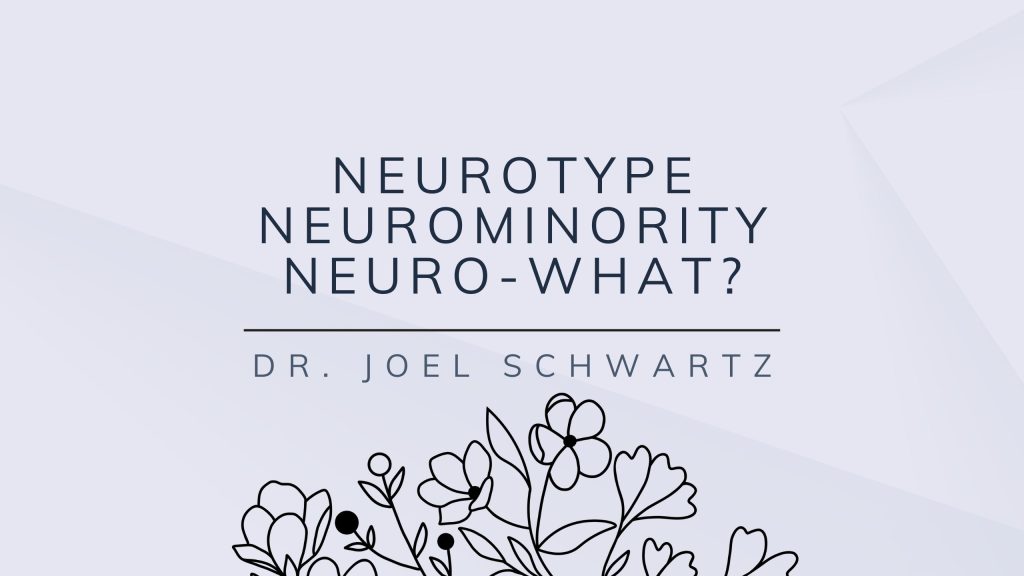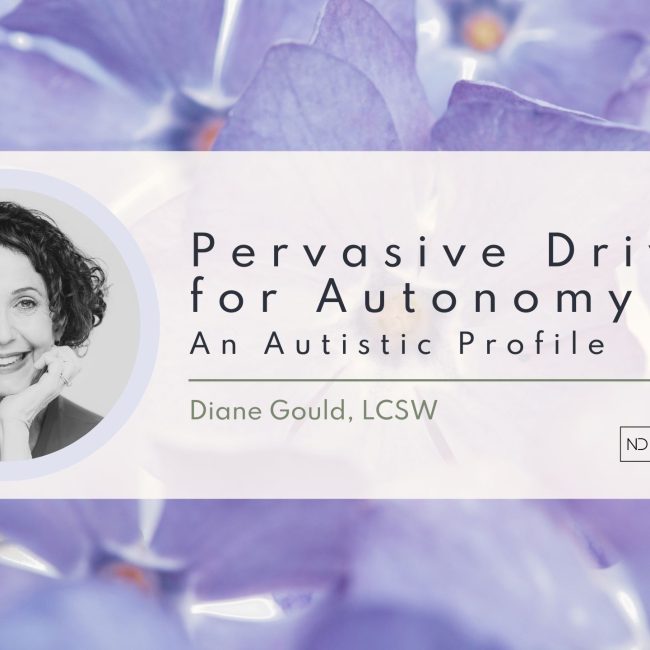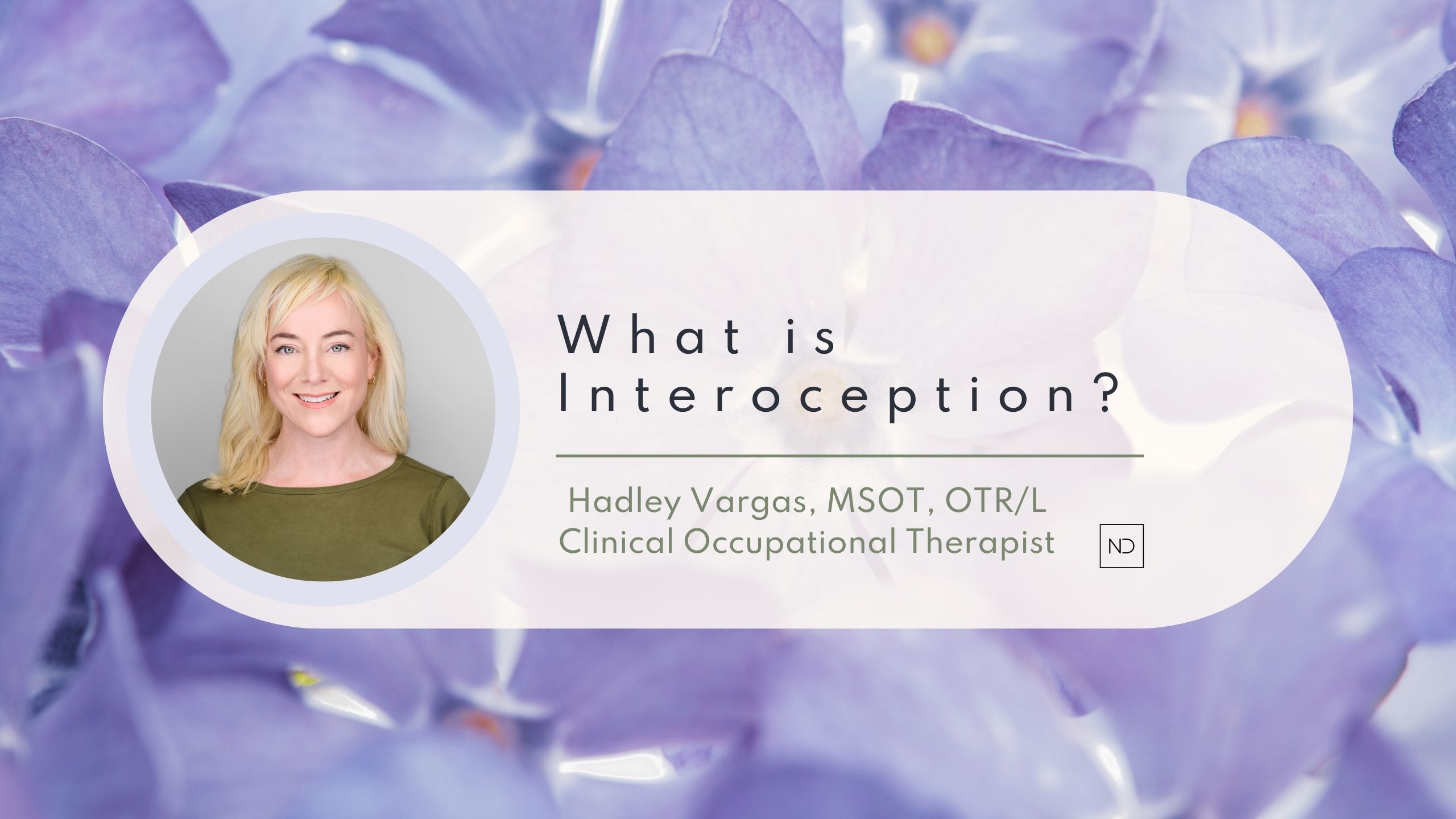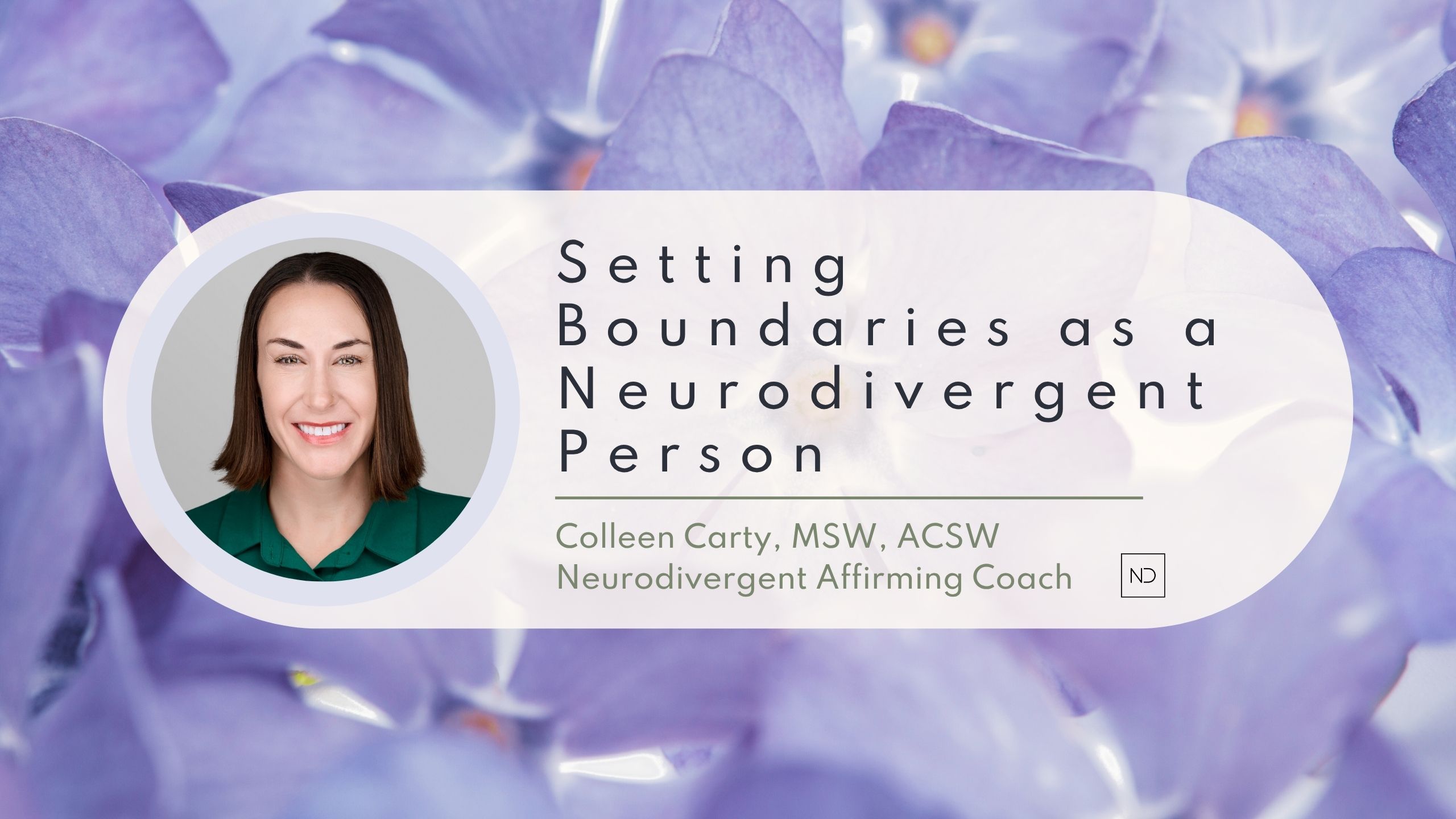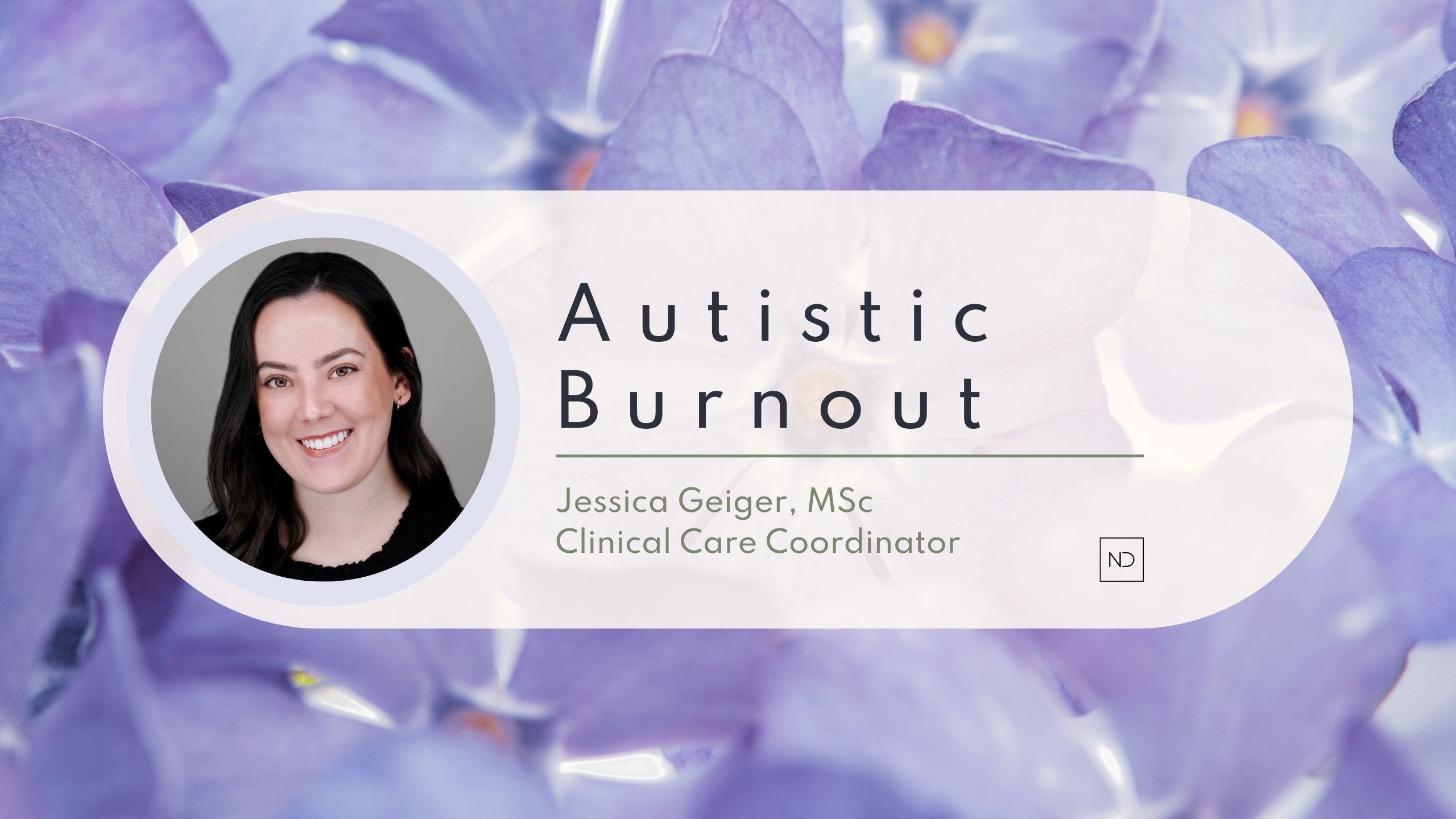
Autistic Burnout
Written by: Jessica Geiger, MSc
Autistic Burnout
For some time, autistic people have taken to social media and other online platforms to discuss their shared experience of autistic burnout. Anecdotally, autistic burnout is described as a state of exhaustion and distress that severely impacts functioning (Higgins et al., 2021). Autistic burnout can have a profound impact on an autistic person’s life. Across various online platforms, autistic adults describe how autistic burnout has cost them employment opportunities, relationships, independence, and their mental and physical health. Raymaker et al. (2020) noted that despite how urgently the autistic community discusses autistic burnout and how desperately they seek prevention and recovery strategies, the concept remains elusive in academic and clinical literature. While recent efforts have been made towards understanding the nature of autistic burnout, research is only beginning to catch up with the dialogue amongst the autistic community. In this post, some of the emerging research on autistic burnout is summarized.
Defining Autistic Burnout
Raymaker et al. (2020) have been credited as the first to define autistic burnout in the literature after designing a study to understand the characteristics of autistic burnout and how it is experienced by autistic people. The study sample was comprised of autistic adults who identified as having been professionally diagnosed with autism. The primary characteristics of autistic burnout were chronic exhaustion, loss of skills, and reduced tolerance to stimulus. Participants described an exhaustion of internal resources (e.g., physical, mental, emotional, and social). With respect to skills, participants associated autistic burnout with a loss of executive functioning, performing activities of daily living, using vocational skills in school or work, socializing, regulating emotions, and living independently. Additionally, participants described greater sensitivity to environmental stimuli, increased instances of overstimulation, increased meltdowns and shutdowns, and avoidance of stimulation. Lastly, participants indicated that autistic burnout results from chronic life stress and a mismatch of expectations and abilities without adequate supports.
In a subsequent study, Higgins et al. (2021) aimed to develop a consensus definition of autistic burnout that could be differentiated from non-autistic burnout. This group of autistic adults defined autistic burnout as a highly debilitating condition characterized by exhaustion, withdrawal, executive function problems, and generally reduced function, with increased manifestation of autistic traits. Higgins et al. (2021) explained that on a surface level, autistic burnout shares commonalities of occupational (non-autistic) burnout, including exhaustion, cynicism, and work efficiency. However, cynicism in autistic burnout appears to be directed more so towards interactions with neurotypical people as opposed to employment. Furthermore, reduced efficacy in autistic burnout is seen across various aspects of everyday functioning, whereas reduced efficacy in non-autistic burnout tends to be restricted to occupational contexts. Non-autistic burnout and autistic burnout seem to share an element of withdrawal, but there is a more complete social isolation observed in autistic burnout. Non-autistic burnout also does not appear to include the cognitive disruption described in autistic burnout. With respect to onset, participants indicated that autistic burnout is preceded by fatigue from masking autistic traits, interpersonal interactions, an overload of cognitive input, and an unaccommodating neurotypical world.
More recently, Arnold et al. (2023) examined the two emerging definitions of autistic burnout described above and sought to quantify the duration, frequency, and intensity of autistic burnout. A total of 141 autistic adults participated in the study, most of whom were diagnosed with autism in adulthood. The research team developed a series of items to investigate the experience and onset of autistic burnout. Several items addressed specific characteristics that Raymaker et al. (2020) and Higgins et al. (2021) used in their respective definitions of autistic burnout. Exhaustion and social withdrawal were the most strongly endorsed characteristics of autistic burnout. In contrast, items relating to meltdown were the least endorsed. Overall, most items had high endorsement, suggesting that both Raymaker et al. (2020) and Higgins et al. (2021) decently captured the experience of autistic burnout in their definitions. Regarding onset, life stressors and sensory environment were the most strongly endorsed. Items related to autistic masking were slightly lower in mean endorsement, suggesting that life stressors and sensory environment may have more influence than autistic masking in causing autistic burnout. Typical duration and frequency of autistic burnout was difficult to establish in this study, although participants described having both acute and chronic episodes of autistic burnout.
Autistic Burnout + Lived Experience
In sum, autistic burnout is not a new phenomenon. It is a concept autistic people have been talking about for quite a while. Researchers have only just started participating in those discussions by seeking to understand autistic burnout through scientific inquiry. A consensus definition characterizes autistic burnout as a state of exhaustion and interpersonal withdrawal that occurs alongside reduced functioning, executive functioning difficulties, and increased manifestation of autistic traits. While autistic burnout shares some similarities with non-autistic burnout, several key features distinguish them from each other. (e.g., social isolation, cognitive disruptions, reduced overall efficacy). Less is known about the duration and frequency of autistic burnout; however, autistic adults endorse both chronic and acute episodes. While autistic masking appears to play a role in autistic burnout, the cumulative stress of existing in an unaccommodating neurotypical world appears to have the strongest influence on episodes of autistic burnout. At the core of the emerging research on autistic burnout is autistic people with lived experience. As researchers continue down the path of greater understanding, it is critical that they continue seeking out and amplifying autistic voices.
…
Resources for Autistic Burnout Prevention and Recovery:
- How to Avoid Autistic Burnout and Why It’s Important
- Autistic Burnout Symptoms: How to Spot Burnout
- Autistic Burnout Recovery: How to Build a Recovery Plan
References
Arnold, S., Higgins, J., Weise, J., Desai, A., Pellicano, E., & Trollor, J. (2023). Confirming the nature of autistic burnout. Autism, 27(7), 1906-1918. https://doi.org/10.1177/13623613221147410
Higgins, J., Arnold, S., Weise, J., Pellicano, E., & Trollor, J. (2021). Defining autistic burnout through experts by lived experience: Grounded Delphi method investigating #AutisticBurnout. Autism, 25(8), 2356-2369. https://doi.org/10.1177/13623613211019858
Raymaker, D., Teo, A., Steckler, N., Lentz, B., Scharer, M., Delos Santos, A., Kapp, S., Hunter, M., Joyce, A., & Nicolaidis, C. (2020). “Having all of your internal resources exhausted beyond measure and being left with no clean-up crew”: Defining autistic burnout. Autism in Adulthood, 2(2), 132-143. https://doi.org/10.1089/aut.2019.0079
Do you have a question?
Send us a message


